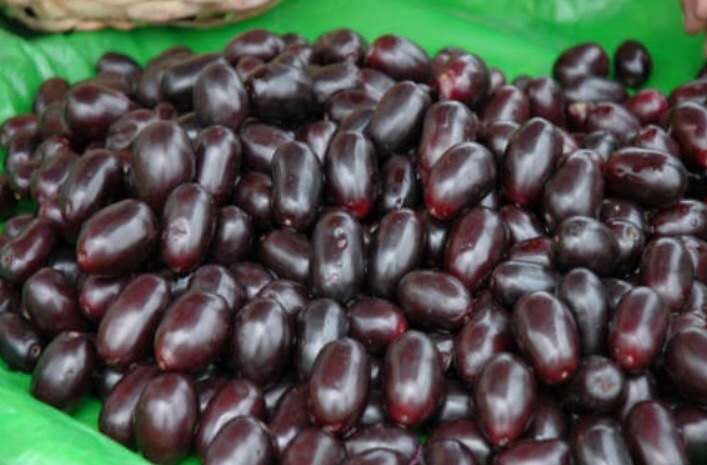- Researchers at the Indian Institute of Technology, Roorkee, are using Jamuns to tap solar power more effectively by making cheap and effective solar cells.
- According to scientists, the pigmentation appearing in Jamuns can easily be used as cheap photosensitisers in Dye-Sensitised Solar Cells or Gratzel cells.
- Gratzel cells are thin film solar cells composed of a porous layer of titanium dioxide (TiO2) coated photoanode, a layer of dye molecules that absorbs sunlight, an electrolyte for regenerating the dye, and a cathode.
- Researchers extracted dyes from jamun using ethanol. They also used fresh plums and black currant, along with mixed berry juices which contain pigments that give characteristic colour to jamun.
Read in Hindi: वैज्ञानिकों द्वारा सौर ऊर्जा लाभ के लिए नई पद्धति विकसित
- The reason solar panels made from jamuns will be less expensive is due to the fact natural pigments such as the ones occurring in jamuns are far more inexpensive than Ruthenium-based pigments that are generally used.
- The simplicity and cost effectiveness of the overall fabrication process, widespread availability of fruits and juices, and ease of extraction of anthocyanin dyes make them novel and inexpensive candidates for solar cells application, researchers said.
- In 2015, at the Paris COP21 climate summit, Prime Minister Narendra Modi along with French President François Hollande unveiled a new global solar alliance comprising of 120 countries.
- The Indian government has pledged to take the lead in investing a lot more in solar energy.
- In order to find renewable and alternate sources of energy to combat global warming and also to reduce human dependence on fossil fuels, which are fast diminishing, scientists look towards solar energy as the potential source of power.
- However, tapping into solar power has proven to be very expensive till now. Researchers all over the world are working on various innovative methods to make the manufacturing of solar panels and their maintenance cheaper than ever before.
Source: Livemint











